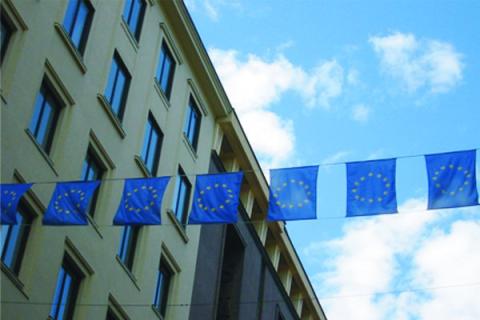 EU Flags // Credit: FutureAtlas.com
EU Flags // Credit: FutureAtlas.com
The 2008 financial meltdown left a slew of economically contused European countries. Assuredly a global misfortune, the Great Recession of 2008 nearly bankrupted some countries, undermined investment in others, and almost prompted the dissolution of the Eurozone. Now, the 28 member countries of the European Union are laggardly recouping their losses. Be that as it may, this past week provided the EU, the world’s largest trading bloc, with reason to believe an economic recovery may be spurred.
Chief negotiators of the European Union-Singapore Free Trade Agreement (EUSFTA) initialed the close to 1,000 page trading protocol last Friday. However this deal has yet to be agreed upon by Singapore, the EU’s member countries, and the European Parliament. Nevertheless, the go-ahead for this Free Trade Agreement (FTA) is pretty well certain—with approval expected to come April 2013 and enactment in late 2014.
In terms of trade, the agreement will phase out close to all tariffs and duties on European Union and Singaporean imports within five years and establish technical standards for automotives, electronics, and green technologies. On the investment side, it will extricate bank expansion in both the EU and Singapore.
The EUSFTA capitalizes on a tenacious trading relation between the EU and Singapore. Trade in services between the two exceeded $37 billion in 2011 and trade in goods surpassed $70 billion in 2012—while reciprocal investment hit $256 billion. Trade in goods between the EU and Singapore increased by 40% from 2009 to 2011 while trade in services rose 41% during that same period. Indeed, bilateral exchange between the two is not exclusively plenteous but also burgeoning. If adopted by the governmental bodies involved, this FTA could promote an increase in trade and investment—the causes of a more robust economy—in both parties.
Technology Sector
The passage of the EUSFTA could bring with it the revamping of the EU’s straggling technology sector. Standardized tech regulations in conjunction with tariff and duty free imports could provide businesses the incentive for more trade and added investment in the EU on part of Singaporean firms. Francis Tan, an economist at Singapore-based United Overseas Bank, claimed that, “…with the diversification of production plants away from China, multinational companies may increase investments and building of more plants in Europe and Singapore-based exporters can certainly find it a great incentive to establish new markets.” GDP and employment rates would certainly increase if Tan’s prediction proves correct.
Banking Services
The FTA also seeks to aid the expansion of financial services from Europe into Singapore, and vice versa. The Singaporean government should find this aspect of the deal especially fruitful because the banking sector is a mainstay of the Singapore economy. With regards to the EU, many European banks operate in Singapore—often utilizing the city-state as a regional headquarter. The EUSFTA ensures that the European Union will obtain the same banking rights in Singapore as its other competitor’s. In fact, the agreement allows EU retail banks operating in Singapore to—under specific conditions—double their amount of customer locations. Accordingly, EU banks will be able to expand yet more in Singapore—augmenting commerce and business in both regions.
Future FTAs in Southeast Asia
Singapore may be the EU’s inlet into FTAs with other Southeast Asian nations and into the Association of Southeast Asian Nations (ASEAN), an economic and geo-political organization that forecasts economic integration by 2015. The EU endeavors to institute a trade deal with Southeast Asian countries and possibly ASEAN soon, with the European Commission asserting that the EUSFTA “has the potential to lay the ground for the EU to engage with the region as a whole.” EUFSTA most definitely may “lay the ground” because it has set the benchmarks for an extensive FTA, focused on the desires of Southeast Asian economies.
But why contend for an FTA with ASEAN and its member countries? FTAs with Southeast Asian countries are thought to be worthwhile for the EU for two reasons. The first being that FTAs, especially ones as comprehensive as EUSFTA, increase commerce and investment between regions, allowing previously domestic businesses to form new markets in different countries; further, they create market competition, leading to either finer quality products or more inexpensive products.
The second purpose to seeking an FTA with Southeast Asian countries is that those blocs or countries that don’t acquire such a deal will fall behind their adversaries who may be striking FTAs with foreign governments, as claimed by a study on the EUSFTA.
As expected, the EU Chief Negotiator Rupert Schlegelmich espoused the deal, opining, "If you look at some of our hard-hit economies in Europe, like Spain, one thing which is going well is exports…by opening up further, by making it easier to have access to other markets, and also to be open to competition from third countries like Singapore…all of that helps. So it's a clear part of our strategy to revitalise and bring Europe back on the growth trajectory." The statement here serves to outline the reasons why the EU requires an FTA with Singapore. The bloc’s dawdling economy is not out of the woods just yet and could use the commerce, investment, and competition that may accompany the EUSFTA.
